Anthrax is a serious infectious disease caused by gram-positive, rod-shaped bacteria known as Bacillus anthracis. It occurs naturally in soil and commonly affects domestic and wild animals around the world. People can get sick with anthrax if they come in contact with infected animals or contaminated animal products. Anthrax can cause severe illness in both humans and animals.
Anthrax is not contagious, which means you can’t catch it from another person like the cold or flu.

How people get infected with anthrax
People get infected with anthrax when spores get into the body. When anthrax spores get inside the body, they can be “activated.” The bacteria can then multiply, spread out in the body, produce toxins, and cause severe illness.
This can happen when people breathe in spores, eat food or drink water contaminated with spores, or get spores in a cut or scrape in the skin. It is very uncommon for people in the United States to get infected with anthrax.
Certain activities can also increase a person’s chances of getting infected.
How animals get infected with anthrax
Domestic and wild animals can become infected when they breathe in or ingest spores in contaminated soil, plants, or water. These animals can include cattle, sheep, goats, antelope, and deer. In areas where domestic animals have had anthrax in the past, routine vaccination can help prevent outbreaks.
Where anthrax is found
Anthrax is most common in agricultural regions of
- Central and South America,
- sub-Saharan Africa,
- central and southwestern Asia,
- southern and eastern Europe, and
- the Caribbean.
Anthrax is rare in the United States. However, sporadic outbreaks do occur in wild and domestic grazing animals such as cattle or deer. Anthrax is more common in countries that do not have programs that routinely vaccinate animals against anthrax. In the United States, veterinarians recommend yearly vaccination of livestock in areas where animals have had anthrax in the past.
How People Get Anthrax
People get infected with anthrax when spores get into the body. When this happens, the spores can be activated and become anthrax bacteria. Then the bacteria can multiply, spread out in the body, produce toxins (poisons), and cause severe illness.
People get anthrax by:
- Breathing in spores,
- Eating food or drinking water that is contaminated with spores, or
- Getting spores in a cut or scrape in the skin.
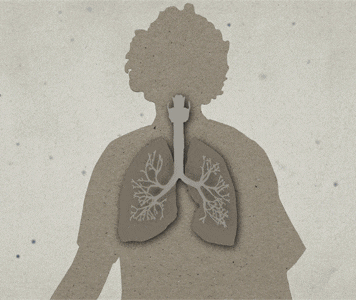
Anthrax is NOT contagious. You cannot catch anthrax from another person the way you might catch a cold or the flu. In rare cases, person-to-person transmission has been reported with cutaneous anthrax, where discharges from skin lesions might be infectious.
Certain activities can increase the chances of getting anthrax
Working with infected animals or animal products
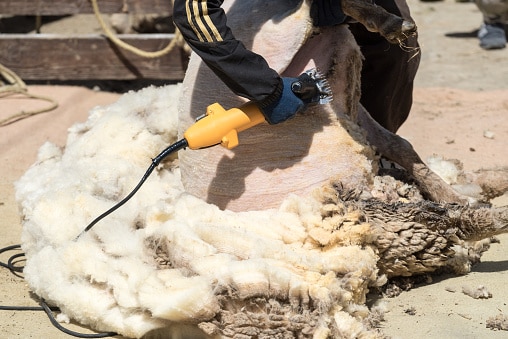
Most people who get sick from anthrax are exposed while working with infected animals or animal products such as wool, hides, or hair.
Inhalation anthrax can occur when a person inhales spores that are in the air (aerosolized) during the industrial processing of contaminated materials, such as wool, hides, or hair.
Cutaneous anthrax can occur when workers who handle contaminated animal products get spores in a cut or scrape on their skin.
Eating raw or undercooked meat from infected animals

People who eat raw or undercooked meat from infected animals may get sick with gastrointestinal anthrax. This usually occurs in countries where livestock are not routinely vaccinated against anthrax and food animals are not inspected prior to slaughter.
In the United States, gastrointestinal anthrax has rarely been reported. This is because yearly vaccination of livestock is recommended in areas of the United States where animals have had anthrax in the past, and because of the examination of all food animals, which ensures that they are healthy at the time of slaughter.
A newly discovered type of anthrax is injection anthrax. This type of anthrax has been seen in northern Europe in people injecting heroin. So far, no cases of injection anthrax have been reported in the United States.
Types of Anthrax
The type of illness a person develops depends on how anthrax enters the body. Typically, anthrax gets into the body through the skin, lungs, or gastrointestinal system. All types of anthrax can eventually spread throughout the body and cause death if they are not treated with antibiotics.
Cutaneous anthrax is the most common form of anthrax infection, and it is also considered to be the least dangerous. Infection usually develops from 1 to 7 days after exposure.
When anthrax spores get into the skin, usually through a cut or scrape, a person can develop cutaneous anthrax. This can happen when a person handles infected animals or contaminated animal products like wool, hides, or hair. Cutaneous anthrax is most common on the head, neck, forearms, and hands. It affects the skin and tissue around the site of infection.
Without treatment, up to 20% of people with cutaneous anthrax die. However, with proper treatment, almost all patients with cutaneous anthrax survive.
Inhalation anthrax is considered to be the most deadly form of anthrax. Infection usually develops within a week after exposure, but it can take up to 2 months.
When a person breathes in anthrax spores, they can develop inhalation anthrax. People who work in places such as wool mills, slaughterhouses, and tanneries may breathe in the spores when working with infected animals or contaminated animal products from infected animals. Inhalation anthrax starts primarily in the lymph nodes in the chest before spreading throughout the rest of the body, ultimately causing severe breathing problems and shock.
Without treatment, inhalation anthrax is almost always fatal. However, with aggressive treatment, about 55% of patients survive.
Gastrointestinal anthrax has rarely been reported in the United States. Infection usually develops from 1 to 7 days after exposure.
When a person eats raw or undercooked meat from an animal infected with anthrax, they can develop gastrointestinal anthrax. Once ingested, anthrax spores can affect the upper gastrointestinal tract (throat and esophagus), stomach, and intestines, causing a wide variety of symptoms.
Without treatment, more than half of patients with gastrointestinal anthrax die. However, with proper treatment, 60% of patients survive.
This type of infection has never been reported in the United States.
Recently, another type of anthrax infection has been identified in heroin-injecting drug users in northern Europe.
Symptoms may be similar to those of cutaneous anthrax, but there may be infection deep under the skin or in the muscle where the drug was injected. Injection anthrax can spread throughout the body faster and be harder to recognize and treat. Lots of other more common bacteria can cause skin and injection site infections, so a skin or injection site infection in a drug user does not necessarily mean the person has anthrax.
Treatment of Anthrax Infection
Doctors have several options for treating patients with anthrax, including antibiotics and antitoxin. Patients with serious cases of anthrax need to be hospitalized. They may require aggressive treatment, such as continuous fluid drainage and help breathing through mechanical ventilation.
For people who have been exposed to anthrax but do not yet have symptoms, certain antibiotics can be used to prevent illness from developing.

Antibiotics
All types of anthrax infection can be treated with antibiotics, including intravenous antibiotics (medicine given through the vein). If someone has symptoms of anthrax, it’s important to get medical care as quickly as possible to have the best chances of a full recovery. Doctors will select antibiotics that are best for treating anthrax and that are best for the patient based on their medical history.
Antitoxin
When anthrax spores get inside the body, they can be “activated.” When they become active, anthrax bacteria can multiply, spread out in the body, and produce toxins—or poisons. Anthrax toxins in the body cause severe illness.
After anthrax toxins have been released in the body, one possible treatment is antitoxin. Antitoxins target anthrax toxins in the body. Doctors must use antitoxin together with other treatment options.
Currently, there are a few types of antitoxins that can be used for treating anthrax.
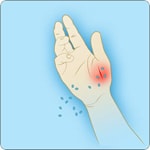
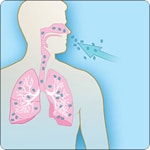

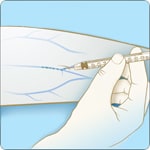


No comments:
Post a Comment